Material Master in SAP S/4HANA is a critical element for businesses using SAP. Consider a scenario in a manufacturing firm where every component, from minor parts to complex assemblies, is cataloged with precise details. The Material Master is a comprehensive, centralized source for this information, ensuring consistency and accuracy across all departments.
This article explores the key aspects of Material Master—material types, basic data, classification, purchasing, MRP, plant storage, and accounting data.

Table of Contents
What is Material Master in SAP S/4HANA
The Material Master in SAP S/4HANA is a comprehensive data repository that serves as the central source of information for each material within a business. It plays a critical role in maintaining consistency and accessibility of material-related data across various departments of an organization. In fact, SAP defines the material master as
The material master contains information on all the materials that a company procures or produces, stores, and sells. It is the company’s central source for retrieving material-specific data. This information is stored in individual material master records.
SAP
The essentiality of material master becomes particularly evident when businesses migrate from existing ERP systems like BPCS, JD Edwards, Oracle, or Lawson, where they often encounter a need for more detailed material data than what was previously required. For example, in a manufacturing firm, the Material Master details everything from raw materials to finished products, enabling efficient tracking and management.
Key Attributes of Material Master Data
The Material Master comprises several key attributes fundamental to its functionality in SAP S/4HANA. They also contribute to accurate data representation and operational efficiency.
- Material Number: Each material’s unique 18- to 40-character identifier. It can be manually entered or automatically generated by the system upon saving the material master record.
- Industry Sector: SAP offers four standard industry sectors: ‘P’ for pharmaceuticals, ‘C’ for chemicals, ‘M’ for mechanical engineering, and ‘A’ for plant engineering and construction. To define a new industry sector, you must choose a unique character as its identifier and link it to a field reference. This reference governs the material master fields’ visibility and requirement status.
- Material Type: Classifies materials based on their characteristics and business role, essential for tailoring the Material Master to specific operational requirements.
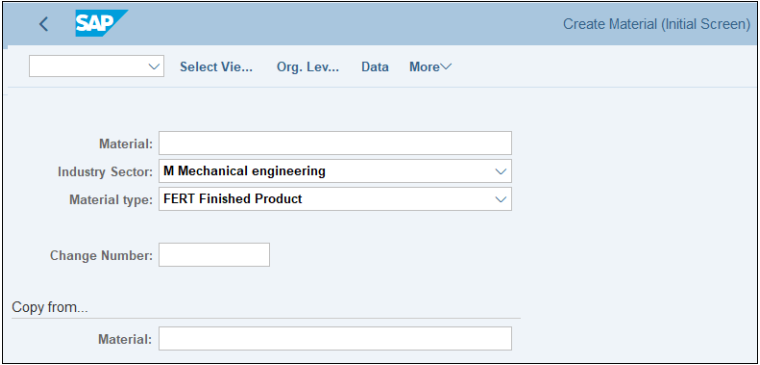
Understanding and correctly setting up these attributes is key to leveraging SAP S/4HANA’s full potential for business efficiency and success.
Material Types
Material Types in SAP S/4HANA categorize materials with similar attributes, streamlining their management. SAP provides a variety of standard material types, and users can also create custom types to meet specific needs. These material types encompass various items, from kanban containers to competitive products, each with distinct characteristics and purposes.
Standard Material Types:
- HIBE: Operating supplies used in production.
- CONT: Kanban containers for JIT replenishment.
- DIEN: Services, including internal and external activities.
- ERSA: Spare parts for equipment maintenance.
- FERT: Finished goods manufactured from raw materials.
- FHMI: Production resources/tools, not for sale.
- HALB: Semifinished goods, used in further production.
- HAWA: Trading goods, purchased and sold.
- HERS: Manufacturer parts with varying part numbers.
- IBAU: Maintenance assemblies for technical objects.
- KMAT: Configurable materials for variant configurations.
- LEER: Returnable packaging materials.
- NLAG: Nonstock materials, or consumables.
- PIPE: Pipeline materials, such as oil or water.
- ROH: Raw materials for production processes.
- UNBW: Nonvaluated materials, important for plant maintenance.
- VERP: Packaging materials provided free to customers.
- WETT: Competitive products for market analysis.
- SERV: Services or Lean Services
Configuring Material Types
Configuring new material types involves copying and modifying an existing type, simplifying the process. User-defined types should start with “Z” in their identifier. Valuation areas (like plant or company code level) are configurable for each material type, affecting how materials are managed in quantity, value, and pipeline handling. This customization allows for precise material handling and valuation control in SAP S/4HANA.
Basic Data
Basic Data in the SAP S/4HANA Material Master is the initial screen for creating a new material master record, containing essential information like the material’s description and basic unit of measure (UoM). It’s fundamental for a uniform view of material across various organizational levels.
Creating a Material Master Record
- Immediately: Use Transaction MM01 or the navigation path: Logistics → Materials Management → Material Master → Material → Create (General) → Immediately.
- Scheduled: Use Transaction MM11 to add a scheduled creation date for planned creations.
- Special: For predefined material types like raw materials (ROH), use Transaction MMR1.
Selecting Views and Organizational Levels
Users select the necessary views for maintaining information after entering the material type and industry sector. The chosen views determine the required organizational levels for the material master record.
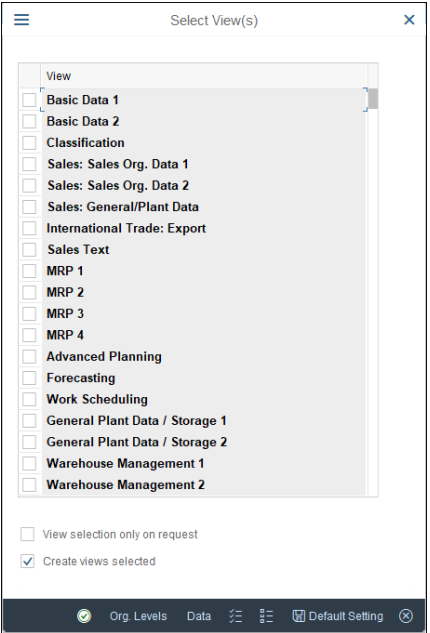
Planning and Forecasting Profiles:
- MRP Profile: Simplifies MRP screen data entry, created via Transaction MMD1.
- Forecast Profile: Sets field values for forecasting, definable through Transaction MP80.
Basic Data is pivotal for consistent material information management in SAP S/4HANA, aiding in efficient planning and forecasting processes.
Classification Data
Classification data in SAP S/4HANA’s Material Master is primarily used for material search, leveraging the characteristic values assigned to each material. This feature becomes highly effective when significant effort is put into defining and applying characteristics and classes, extending beyond materials to include entities like vendors or batches.
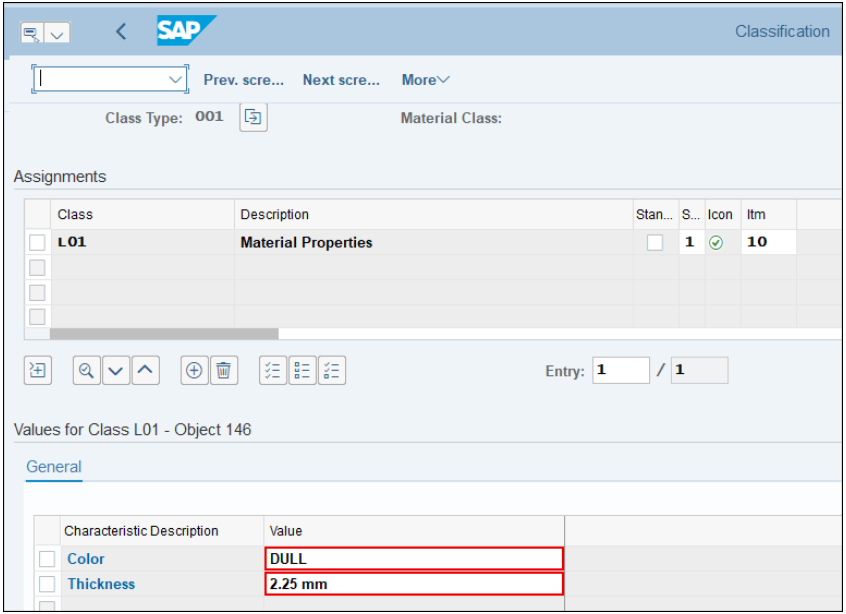
Key Components of Classification Data
- Class Type: In the Classification tab, materials are assigned to user-defined classes. Each class belongs to a class type, a predefined grouping in SAP. For example, class type 001 is for material master, while 023 is for batch records.
- Classes: Individual classes can be chosen once a class type is selected for a material. These classes have characteristics that describe the material more precisely than standard material master fields.
- Characteristics: The lowest level of the classification structure, where specific information or values are entered for a material. Characteristics within a class, like color or thickness, can be configured to accept specific values or ranges and can be set as mandatory or optional.
Purchasing Data
Purchasing Data in the SAP S/4HANA Material Master is key for materials involved in procurement, such as trading goods and raw materials.
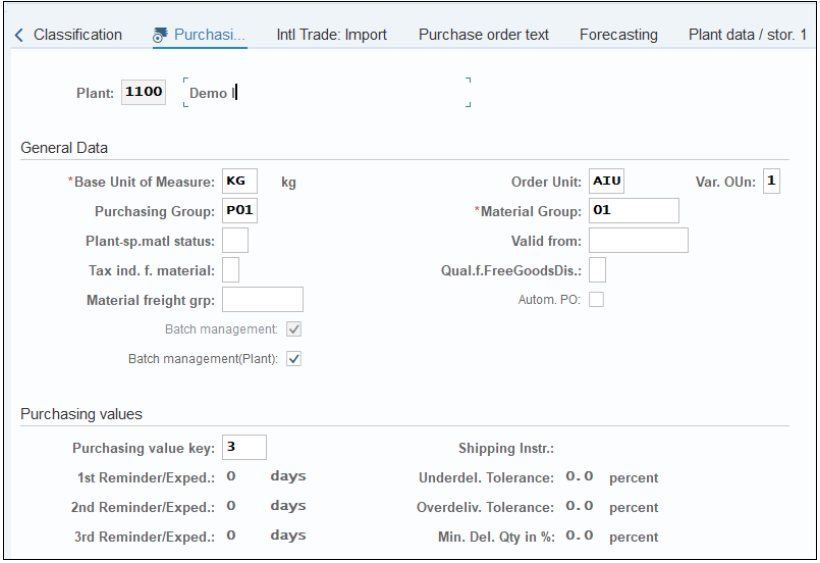
Key Elements of Purchasing Data
- Base and Order Unit of Measure: Defaults from Basic Data, with the Order Unit specifying the purchasing unit. A conversion might be needed if it differs from the Base Unit.
- Plant-Specific Material Status: Dictates the material’s availability and status at the plant level.
- Tax Indicator for Material: Automates tax code determination, influencing purchasing conditions.
- Material Freight Group: Classifies materials for transportation purposes.
- Automatic Purchase Order: Facilitates automatic PO generation from requisitions, dependent on vendor master record settings.
- Batch Management and Inspection Stock: Configures batch creation for materials and controls quality inspection processes.
- Source List and Foreign Trade Data: Ensures procurement and foreign trade compliance, including commodity codes and import/export groups.
- Origin Information: Includes Country and Region of Origin, crucial for export documentation and compliance.
The Purchasing Data in SAP S/4HANA’s Material Master ensures efficient, compliant procurement, covering unit measures, tax codes, freight classifications, and regulatory compliance.
Material Requirements Planning (MRP)
MRP in SAP S/4HANA is a crucial process for managing the planning and control of materials.
Key Elements of MRP
- MRP Type: Dictates the planning procedure, with types like PD (Standard MRP) and VM (Automatic reorder point planning). Custom types can also be configured.
- Reorder Point: Used in reorder point planning to determine when materials should enter the next planning run.
- Planning Time Fence: Sets a period with no automatic plan adjustments.
- MRP Controller: Identifies the person or team responsible for material planning.
- Lot Size Data: Involves minimum and maximum lot sizes for material procurement.
- Availability Check: Ensures material availability, incorporating replenishment lead time.
- Discontinued Parts: Manages information for phasing out materials.
Plant Data/Storage Location
Plant Data/Storage Location in SAP S/4HANA Material Master is essential for managing material storage and shelf-life characteristics at the plant and storage locations.
General Data
This section includes fields specific to each storage location, such as Storage Bin and cycle counting indicators. These general data items are critical for efficient inventory management, ensuring materials are stored and accounted for correctly within different storage locations.
Shelf Life Data
Shelf life data is crucial for materials with expiration concerns, like food, chemicals, and pharmaceuticals. It involves managing shelf-life dates and is necessary for batch-managed materials, ensuring that products are used or sold before expiring.
Accounting Data
Accounting Data in the SAP S/4HANA Material Master allows the accounting department to manage valuation and pricing information for inventory transactions.
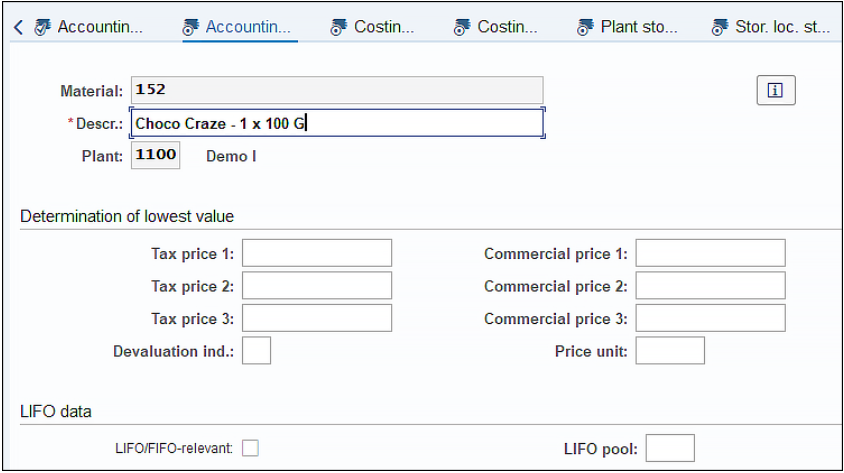
Key elements of accounting data include:
- General Data: Displays information like the Base Unit of Measure, previously maintained in other material master tabs.
- General Valuation Data: Determines the valuation class and material price at the plant level, with options for standard or moving average prices.
- Determination of Lowest Value: Includes fields for tax and commercial prices, devaluation indicator, and price unit, which are crucial for valuation accuracy.
- Last In, First Out Data: Contains LIFO/FIFO-relevant indicator and LIFO pool field, essential for inventory valuation methods.
Wrapping Up
The Material Master in SAP S/4HANA is crucial for streamlined supply chain and inventory management. It provides a comprehensive view of each material, encompassing various data types like Basic Data, Classification, Purchasing, MRP, Plant Data/Storage, and Accounting. Efficiently managing these aspects is vital for operational excellence in SAP S/4HANA. To stay updated on best practices and deepen your understanding of SAP S/4HANA, subscribe to the Spend Wizard blog.
- Overview of the Material Master in SAP S/4HANA - January 2, 2024
- SAP FICO TRANSACTION CODES (MOST COMMON) - December 24, 2023
- Best SAP S/4HANA MM Books for Beginners and Advanced Learners - November 25, 2023




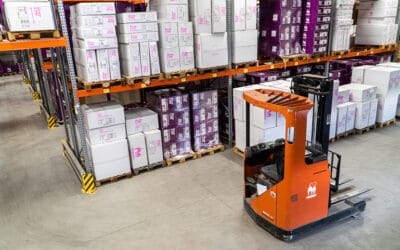
0 Comments